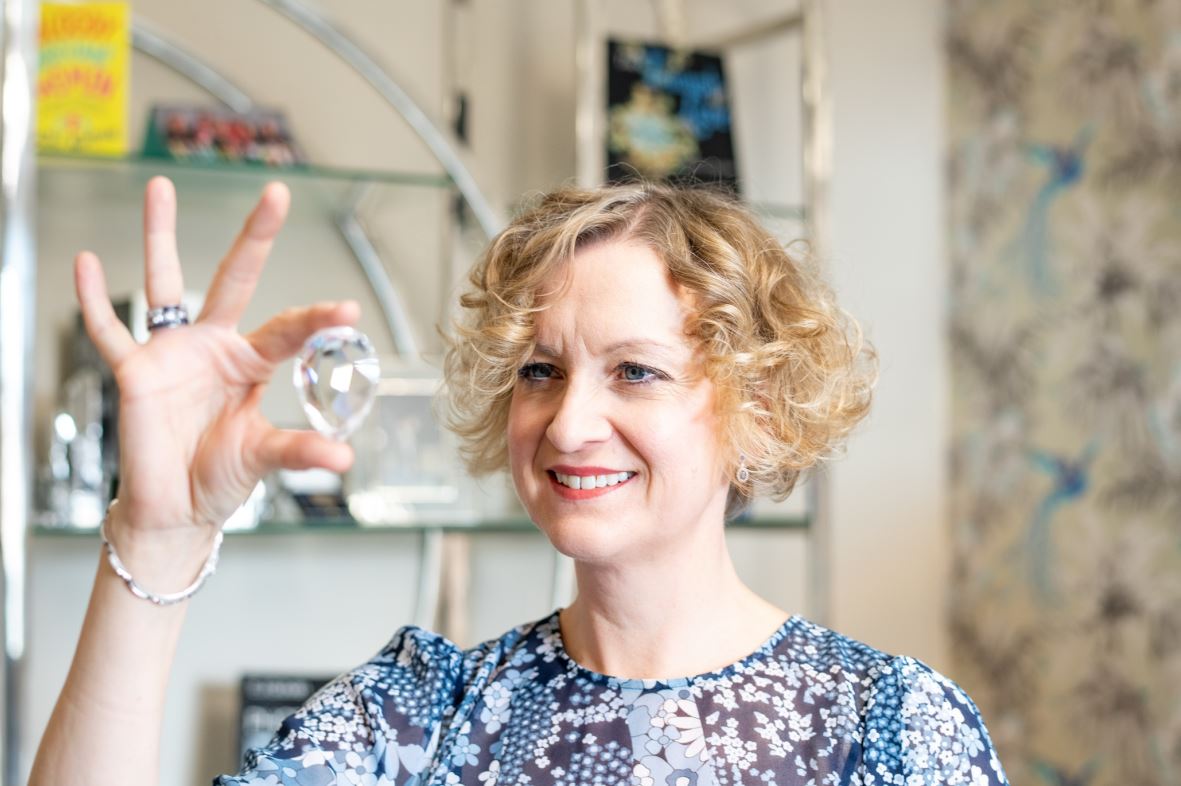As we celebrate National Diamond Month this April, Helen Dimmick – our very own world-renowned diamond, gemstone and fine jewellery specialist, shares her expert guide to all thing’s diamonds.
If you’re thinking of buying one for a special person in your life, planning on treating yourself to one, or if you’re just keen to know more about one of the most sought-after stones in the world, then this simple guide is for you:
A brief history of diamonds…
Diamonds were first found in alluvial (river) deposits in India from the 4th Century BC. Overtime, they were found in western Europe along trade routes via Venice. However, the first known cutting wasn’t until the 15th and 16th Century when they became the fashionable accessory for the elite classes. Indeed, we believe the first engagement ring was for Mary of Burgundy in 1477 from Archduke Maximillian of Austria. The modern diamond market really begins on the African continent though, with the discovery in 1869 of diamonds in Kimberly, South Africa, underground in their original pipe mine where they were first formed. Today central and southern Africa, Botswana, the Democratic Republic of Congo, Australia and Canada are the largest producers of diamonds.
Symbolism…
Throughout history diamonds have been worn as a symbol of strength, courage and invincibility. Those born in April are lucky enough to call this scintillating gem, a symbol of clarity and strength, their birthstone. An emblem of purity and perfection. Once only the preserve of royalty and powerful families, today they are the ultimate symbol of love.
Definition…
By definition a gemstone is; rare, durable and beautiful. Therefore, a diamond that is the utmost embodiment of these properties is, by association, a unique and perfect symbol of love.
The four C’s…
The ‘4C’s’ is a term you will have certainly head when shopping for diamonds – it started as a mnemonic way to help students remember four of the factors that characterise a faceted diamond:
- Carat - The unit measurement of gemstone weight (not the size). One carat abbreviated to ‘ct’ is equal to a 1/5th of a gram. 1 carat is known as 100 points, half a carat 50 points and so on.
Like all of the ‘4C’s’ Carat has an impact on the price. All things being equal the heavier the diamond the higher the price, but on a nonlinear scale. That is because a diamond that is twice the weight, is more than twice as rare, therefore more than twice the cost.
- Clarity - Clarity is defined as relative freedom from inclusions and blemishes. An Inclusion is a characteristic inside the stone whilst blemishes are surface characteristics.
There are six different types of clarity grades you will come across:- Flawless ‘FL’ - Show no inclusions or blemishes
- Internally Flawless ‘IF’ - Show no inclusions and only insignificant blemishes
- Very Very Small Inclusions ‘VVS1/2’ - Contain minute inclusions that are difficult to see and locate
- Very Small Inclusions ‘VS1/2’ - Contain minor inclusions that are somewhat difficult to see
- Slightly Included ‘SI1/2’ - Contain noticeable inclusions that are easy to see
- Imperfect ‘I1/2/3’ – Contain obvious inclusions that can easily be seen with the naked eye
- Colour - There are two scales of grading for a diamond’s colour. The degree of ‘whiteness’ and the fancy colour scale. The ’Whiteness’ Scale plots the relative position of a diamond’s dody colour on a ‘colourless’ to (normally) yellow scale.
For fancy colours it is the hue, saturation and tone that is assessed. Usually in order of rarity yellow, brown, sometimes green, blue, orange and pink, rarely red and purple. Approximately only 1 crystal in 10,000 is a fancy colour, therefore they are incredibly rare. The value of fancy colours value determined by fashion too.
- Cut - The most important of the 4C’s as the cut has the greatest opportunity to unlock the ultimate potential of the diamond. It is also the only factor influenced by humans. Diamonds are notoriously difficult to cut, let alone cut accurately! Diamond cut is graded on the following criteria:
- Proportion – the angles and the relationship between the different parts of a diamond
- Symmetry – the symmetrical appearance of the stone
- Finish – the exactness of the shape and arrangement of the facets and the quality of polish
Characteristics of a good cut:
-
- Brilliance- white light returned to the eye
- Dispersion – Fire- white light broken up into spectral colours
- Scintillation- sparkle
Time to go shopping…
Diamonds are one of the most reliable investments in the world — if not the most reliable. Rough diamonds never lose their value, and the demand for cut and polished gems always remains high. So, what are you waiting for?
If there was ever a time to buy a diamond, it’s National Diamond month!


